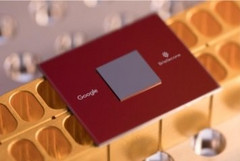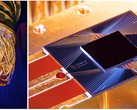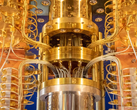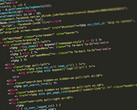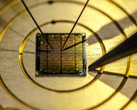Quantum computing is supposed to be the next phase in the evolution of supercomputers. Google and IBM have been tinkering with quantum processors for the last several years in order to improve overall stability and efficiency, while keeping low error rates. Google scientists believed that a quantum computer capable of processing 49 qubits (bits that can be in either 0/1 or both states at the same time) would be able to surpass any conventional supercomputer in existence when it comes to well-defined computer science problems, thus leading to “quantum supremacy”. However, some IBM scientist further stipulated that “quantum supremacy” would only emerge with a chip that can process 56 qubits or more. Eager to prove that “quantum supremacy” is possible, Google is now experimenting with a 72-qubit chip codenamed Bristlecone that also yields low error rates.
Even though 49 or 72 might seem small numbers, current conventional supercomputers can only simulate a 46-qubit quantum computer. Since the memory requirements double every time a new qubit gets added to the equation, the amount of GB of RAM needed for conventional supercomputers to emulate a 72-qubit quantum computer would be 2^(72-46) = 67,108,864, which is impractical at this moment.
More important than the number of qubits is the processing error rate. In order for a quantum computer to prove “quantum supremacy”, the error rate needs to be in the range of less than 1%. Google claims that Bristlecone is capable of processing information with only 1% error rate for readouts, 0.1% rate for single –quantum gates and 0.6% two-qubit gates.
While Bristlecone seems ready for practical applications, Google has calculated that real-world problem solving would only be possible with quantum computers able to process hundreds of thousands to millions of qubits. Even if Moore’s Law still applies to quantum computing, we are looking at more than a decade before quantum computers could be of any real use. Meanwhile, a few thousand qubits could be used for breaking any current cryptographic algorithms.
Loading Comments
I first stepped into the wondrous IT&C world when I was around seven years old. I was instantly fascinated by computerized graphics, whether they were from games or 3D applications like 3D Max. I'm also an avid reader of science fiction, an astrophysics aficionado, and a crypto geek. I started writing PC-related articles for Softpedia and a few blogs back in 2006. I joined the Notebookcheck team in the summer of 2017 and am currently a senior tech writer mostly covering processor, GPU, and laptop news.
> Expert Reviews and News on Laptops, Smartphones and Tech Innovations > News > News Archive > Newsarchive 2018 03 > Google presents 72-qubit quantum computer
Bogdan Solca, 2018-03- 6 (Update: 2018-03- 6)




